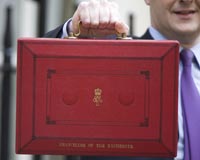The chancellor’s announcements fall short of the hoped-for business rates revolution, but Mark Higgin and Blake Penfold find some reasons for optimism
Against the background of a worsening economic outlook, those listening to the chancellor’s Budget speech and hoping for radical reform of the business rates system were probably disappointed. However, the devil is in the detail and a close perusal of the Budget document itself reveals that the government has been listening to ratepayers’ concerns, in part at least.
Small business boost
The focus of the speech was on the small business sector, with a significant extension of the small business rate relief system. Under the existing regime, small businesses with an assessment of less than rateable value £6,000 pay no rates at all. That threshold will rise to £12,000 on a permanent basis from April 2017. From the same date, properties with assessments of between £12,000 and £15,000 will be eligible for tapered relief. Also from April 2017, the small business multiplier (set at £0.484 for 2016/7) will apply to properties with assessments of up to £51,000, rather than the present figure of up to £18,000 (or £24,500 in London).
According to the chancellor, these measures mean that 600,000 small businesses will be taken out of business rates. That is also good news for occupiers of properties with assessments of over rateable value £12,000 as it should reduce the number of appeals on smaller properties, allowing the Valuation Office Agency to divert resources to making sure that larger properties are more accurately assessed.
The chancellor did not mention that many retail premises have, for the past two years, enjoyed retail rate relief of £1,000 or £1,500 per annum and that relief has ended. As a result, for all of the sound bites, an independent retailer in a market town or suburban London may see very little change in its bill. In his speech, the chancellor also neglected to say how these measures were going to be paid for; at the moment the cost is met by a levy on larger properties and, as the Budget book puts the cost of the additional reliefs at £6.39bn, that could well mean an increase in the levy.
Measuring inflation
The second major change is the adoption of the consumer prices index (“CPI”) in place of the retail prices index (“RPI”) as the measure of inflation applied to the uniform business rate multiplier each year. This is a welcome move but will not be put in place until 2020. A better approach would have been to remove the linkage to inflation altogether and allow the yield from the tax to float in line with the amount of rateable value in the rating lists. There are no other taxes where the tax rate is index-linked and to present the change of index as some kind of panacea is misguided. Had CPI been used instead of RPI in the current rate year the saving would have been a little over £200m; a drop in the ocean compared to the £28bn raised from business rates annually.
Regular revaluations
Looking to the longer term, the government has announced an aim to carry out more frequent business rate revaluations (at least every three years) and government will publish a discussion paper this month outlining options on how this can be achieved. The key issue will be delivery of a three-yearly revaluation in tandem with the “check, challenge, appeal” regime, announced recently.
There is every likelihood that there will be a substantial number of unresolved appeals outstanding at the commencement of the next list. In the proposed format of the new appeals system it could take 34 months for an appeal to get to the point where it is ready to be referred to a tribunal for hearing. If the government is serious about adopting a shorter revaluation period it also needs to think hard about how it is going to make the whole system more transparent, because that is the only way in which appeal numbers will be reduced. As the proposals stand, the ratepayer has to make the running by providing all of the evidence to prove his assessment is incorrect. The government and HMRC seemed to have missed the point that business rates are an assessed tax and it is not unreasonable for the assessing body to provide an explanation of how the figures are arrived at. If that aspect is reformed, a shorter revaluation period, with all the benefits it entails, might just work.
Modernising billing
The government is also intent on “transforming” business rates billing and collection, introducing e-billing and standardised rates bills and proposing that, by 2022, local authority business rate systems should be linked to HMRC digital tax accounts so that businesses can manage their rates bills in one place alongside other taxes. Initially, the government says it will work with local authorities across England to standardise business rate bills and ensure ratepayers have the option to receive and pay bills online by April 2017.
This move raises the question of just what is the role of the billing authority in rates collection. Surely it would make sense to let HMRC collect business rates and avoid the duplication inherent with more than 300 individual local authorities. But that will not happen because it would run counter to the government’s “devolution revolution” – the increased retention of business rates by local authorities.
The final elements of the Budget announcements on business rates gave details of a significant acceleration of that process. From April 2017, Greater Manchester, the Liverpool city region and Greater London Authority will pilot 100% business rates retention. This is three years ahead of the 2020 date previously announced. It will be a massive change in local authority funding and the pilot regions are some of the most high-profile locations in the country.
Taken as a whole, the Budget changes have some welcome elements but fall far short of the radical reform that many commentators were hoping for.
Mark Higgin is a partner and head of rating at Montagu Evans LLP and Blake Penfold is a business rates consultant at http://blakepenfold.com







